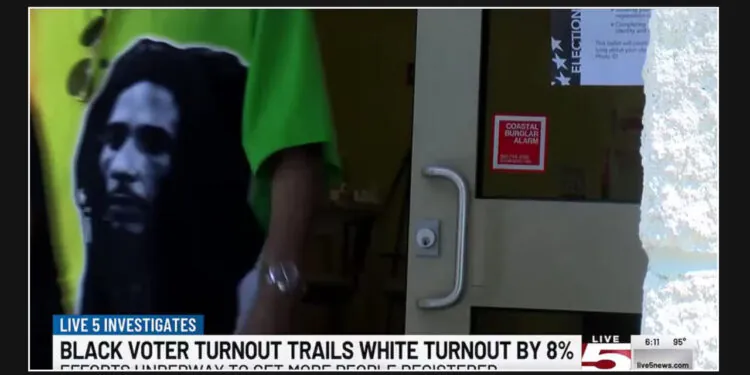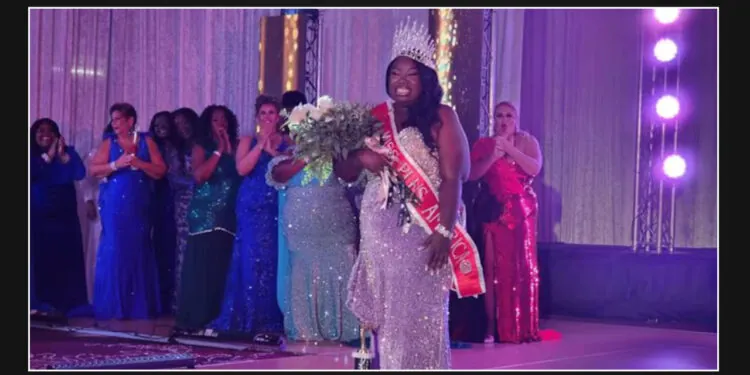Millions of voters will be heading to the polls in November, however, it’s important to note that not all demographics have the same voter turnout rates. This is according to a report by WCSC which highlights the need for targeted efforts to ensure equal participation from all groups.
Live 5 Investigates has discovered a noteworthy discrepancy in the turnout rates of registered Black voters versus registered white voters based on decades of data published by the South Carolina Elections Commission.
Registered Black voters had a turnout rate eight percent lower than registered white voters during the 2020 presidential election.
As an assistant professor at Claflin University and a history doctorate holder, Robert Greene sheds light on the historical factors that contribute to lower Black voter turnout.
According to Greene, there is a growing concern among Black Americans that the government, at all levels – federal, state, or local, is biased against them. Despite their active participation in the electoral process, Black Americans feel that the politicians they elect do not prioritize their welfare. This perception is a cause for worry.
In certain regions of the state, the difference in turnout between Black and white voters is more pronounced. However, in Dorchester, Berkeley, and Kershaw counties, the margin was kept within three to four percent during the 2020 elections. On the other hand, Williamsburg had a significant discrepancy, with a 13 percent gap between Black and white voter turnout. The situation is even more concerning in Saluda and Newberry counties, where the difference in turnout between Black and white voters was over 14 percent.
Greene suggests that Black voters may be discouraged from voting because their vote may not hold as much weight as they would like it to. This is particularly true in areas where the choice is between a Democrat and a Republican, and where the Black voter’s district may not be as influential in terms of congressional races. For instance, in South Carolina, unless you are in James Clyburn’s district, your vote may not carry as much weight compared to battleground states.
As you move closer to your local community, the power of your vote becomes stronger, despite its potential weakening in national politics.
In the June primary election of this year, Republican candidates Sen. Sandy Senn and Rep. Matt Leber battled for South Carolina Senate District 41. The outcome of the election was decided by a mere 33 votes.
During the 2020 election, Senn emerged as the victor over Democrat Sam Skardon with a narrow margin of 1 percent. Skardon has expressed his belief that if a higher percentage of people had turned out to vote, the election outcome may have been different.
Skardon emphasized the importance of not taking communities for granted and stressed the need to revisit them. “It’s crucial that we go back to these areas and ensure that we’re not neglecting them,” he said.
Skardon currently holds the position of chairman for the Charleston County Democratic Party.
In the last presidential election, white voters had a higher participation rate than Black voters in every county across the United States. This issue is widespread and affects the political representation of Black communities.
Back in 2008, when Barack Obama first ran for presidency, the trend wasn’t the same as it is today. Surprisingly, Black voters turned out in greater numbers than white voters in half of the counties.
According to Greene, having a candidate from a certain community is important, but representation goes beyond that. It also involves having diversity in the candidate’s close circle, staff offices, and outreach programs aimed at engaging with Black voters and other communities. Greene believes that this is crucial in increasing voter turnout. It’s not just about having a candidate from the Black community, but someone who comprehends and addresses the concerns and interests of Black people.
The Delta Sigma Theta Sorority, INC. chapter in Walterboro is taking steps to bridge the voter gap. Leading this initiative is Alanna Hollingsworth, who serves as the chairwoman of the Social Action Committee.
Hollingsworth stated that their focus has been on reaching out to high school students who have recently turned 18. They aim to connect with these individuals and ensure they are in the loop.
Hollingsworth and her team take to the school hallways and community events to encourage young people to register to vote in the lead-up to an election.
As part of their activism, registration drives are just one aspect. However, Hollingsworth emphasizes that education is an even more significant component. They conduct classes to educate voters on important factors such as poll locations, their rights, and how to tackle systemic issues like physical accessibility to the polls.
According to Hollingsworth, there are individuals who lack transportation to the polls. She suggests that people with access to means of transportation, such as church vans or personal vehicles, should use them to assist others in getting to the polls. She emphasizes that even individuals without an official organization can make a difference by helping their family members or acquaintances get to the polling stations. The goal, she says, is to encourage as many people as possible to exercise their right to vote.
According to Hollingsworth, their approach is based on data analysis. They will assess the effectiveness of programs that aided voter registration and turnout, and expand them in preparation for the upcoming elections.











